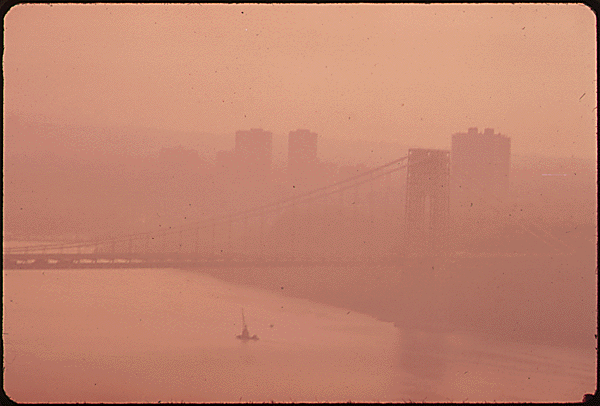January 28, 2020
DEP Milestones: It’s 1972,
Summertime Air Appears Not So Clear in Many New Jersey Cities

Just as clearly, you can be assured that the pop singer’s reggae-flavored tune wasn’t about New Jersey – where the state’s daily air quality index had measured air pollution for the months of June, July and August 1972 and found it to be less than acceptable in Trenton, and not much better in places like Toms River and Somerville.
And now, a look at 1972 …
In January 1972, the DEP’s Bureau of Air Pollution Control submitted New Jersey’s State Implementation Plan to achieve National Ambient Air Quality Standards set by the EPA, as directed by the Clean Air Act of 1970. On May 15, the Bureau initiated a daily statewide air pollution index and forecast, using data collected from 19 monitoring sites that tracked smoke and particles, carbon monoxide, sulfur dioxide and photo-chemical oxidants. The program rated air quality based on health and secondary effects, and was the first statewide daily index in the nation.
That fall, the summertime air quality was the subject of a story in the Evening Times of Trenton. The article, published on Sept. 28, 1972, began with these words: “Air pollution in downtown Trenton fell below the acceptable level more often than not last summer …”
According to the story, headlined “You Can’t Breathe Easy Here,” a monitor on Trenton’s East State Street indicated that pollution levels were “… unhealthful on two of the 92 days and unsatisfactory on 53. … There were no days rated as good.”
The story also indicated that four of New Jersey’s six largest cities weren’t faring any better: the air quality index recorded 32 unhealthful days in Jersey City, 23 in Newark, 14 in Elizabeth and four in Paterson. Surprise! Camden had the best record among the big cities – 87 satisfactory days versus two unhealthful days.
But give New Jersey a little credit: In mid-May of that year, state officials already were clearly concerned about the air that residents were breathing and had embarked on what today is a full-fledged effort to take better care of the environment – simply by keeping track of daily air pollution through data collected from 19 monitoring sites around the Garden State.
###